Myolay™
To re-establish the correct jaw relationship and occlusion
Myolay™ is a built-up composite technique used mainly in the primary and mixed dentition to assist in arch development and jaw alignment and is used in combination with MRC's appliances. Myolay™ involves building up the four lower deciduous molars (or the first and second molars when indicated in older patients) by two to four millimetres with composite resin that is specifically shaped depending on the indication. By re-establishing the correct relationship between the upper and lower jaws, Myolay™ permits habit correction to occur more effectively and arch development to continue without any occlusal interferences. Myolay™ must be used when nasal breathing has been established as the technique is ineffective if the patient cannot keep their mouth closed and teeth in contact. For more information on Myolay™, please complete our advanced online courses.
Design Features and Indications
The design features of the Myolay™ composite are suited to establishing the correct jaw relationship and assisting with development when combined with MRC's appliances. It is most effective in growing patients and is mainly used in the primary and mixed dentitions.
Class II
Myolay™ can be used to help advance the lower jaw in patients with a large overjet and, in these cases, it is shaped to be sloped upwards anteriorly. This has benefits orthodontically and also for the patients breathing function. As always, it is most effective when the patient is still growing and has established nasal breathing. When used in this way, it is usually combined with the Myobrace®J or K series, and The Myosa® System.
Class III
Myolay™ can be used to help unlock the patient's bite and promote maxillary development in growing patients with an underbite or reverse overjet and, in these cases, it is shaped to be sloped downwards anteriorly or more commonly shaped flat. This has benefits orthodontically and also for the patients breathing function. When used in this way, it is usually combined with the Myobrace®i-3® and BWS or Biobloc (if needed).
Unilateral/bilateral crossbite
Myolay™ can be used to help unlock the patient's bite, develop the arches and realign the lower jaw in patients with unilateral or bilateral posterior crossbites. In unilateral crossbite cases, it is shaped to be sloped opposite to the direction of the mandibular shift, which encourages the patient to posture the jaw in the ideal relationship. In bilateral crossbite cases, it is shaped flat to unlock the bite and allow upper arch development. When used in these ways, it is usually combined with the Myobrace® second stage appliances and BWS or Biobloc (if needed).
Directions for Use
The Myolay™ is applied to the lower deciduous molars only using regular composite bonding protocols. The composite is usually coloured to improve patient acceptance and allow easier removal if necessary. If they are placed on deciduous teeth, removal occurs with exfoliation of deciduous teeth.
Instructions for application:
Step 1
Clean the occlusal surface of the teeth that the Myolay™ is to be placed on with a slow speed brush and pumice. Rinse thoroughly.
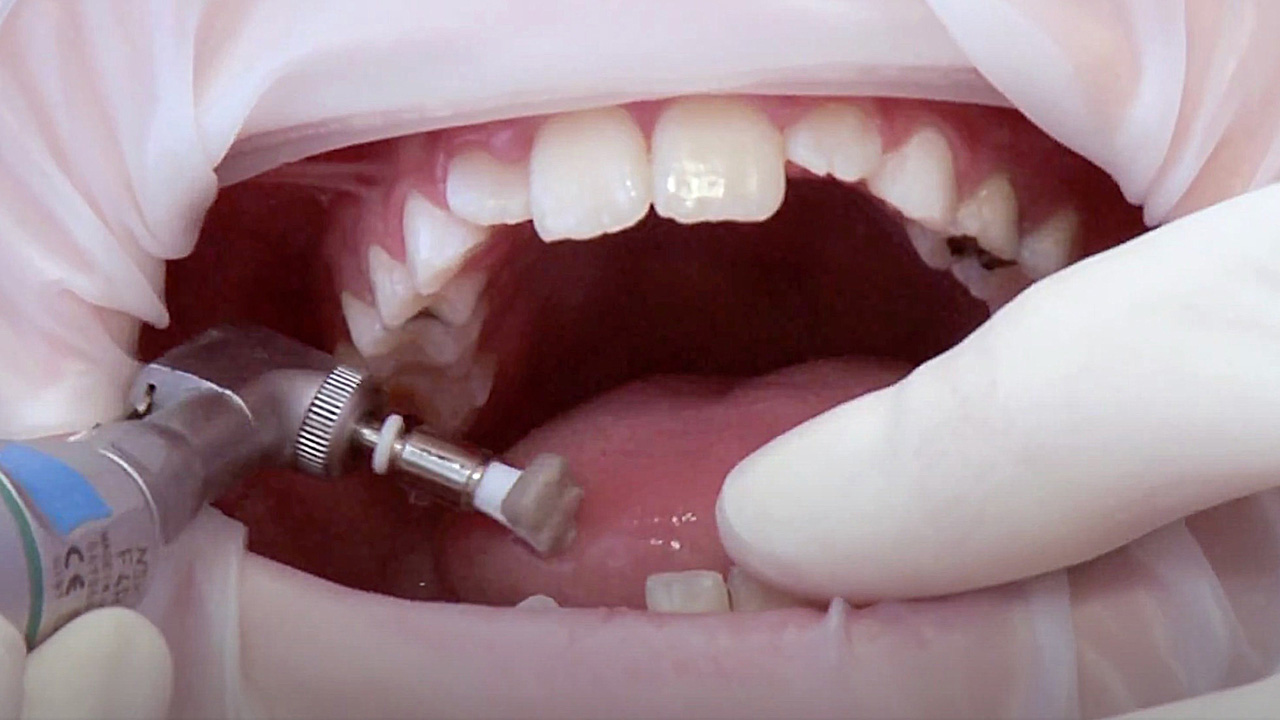
Step 2
Follow the manufacturer's composite bonding instructions, then apply composite and shape depending on indication.
Step 3
Instruct the patient to wear their Myobrace® or Myosa® appliance (depending on indication) for one to two hours while awake and overnight while sleeping.
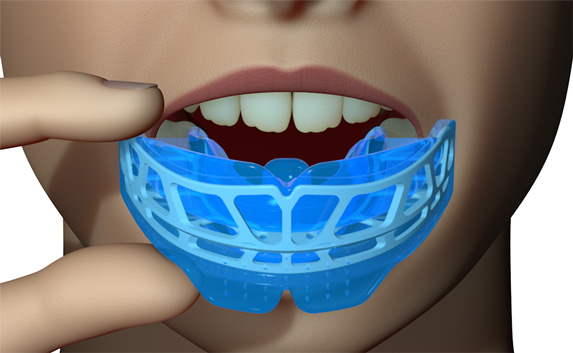
Important Notice
Myolay™ requires further training in order to become competent in its use. For more information on Myolay™, please complete our advanced online courses.
Incorrect usage of the appliance can result in adverse side effects.
Case Studies
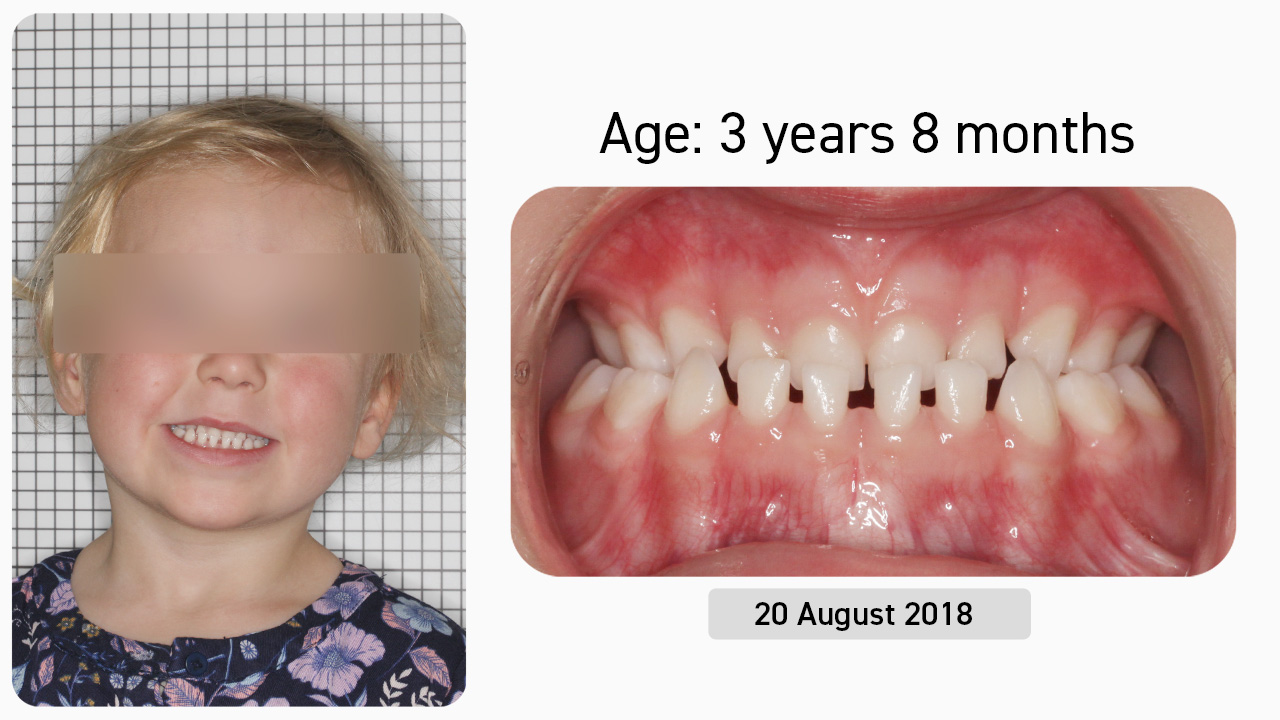
Case Study 1
This three-year-old female patient presented with the chief complaint of incorrect jaw development and wanted early interceptive treatment. After being presented with the various treatment options, the decision was made to undertake Myobrace® treatment, involving the use of the Myobrace® appliances in conjunction with Myolay™ and, given her young age, a simplified Myobrace® Activities program. For children below the age of five, we acknowledge that absolute compliance may be unrealistic, therefore, Myobrace® treatment is divided into two phases. Phase one is a six-month treatment program, aimed at early interception of mouth breathing and myofunctional disorders, with the goals of treatment being to establish nasal breathing and begin habit correction in order to promote good craniofacial growth and development. At age six or seven, the patient is then re-evaluated for consideration of phase two.
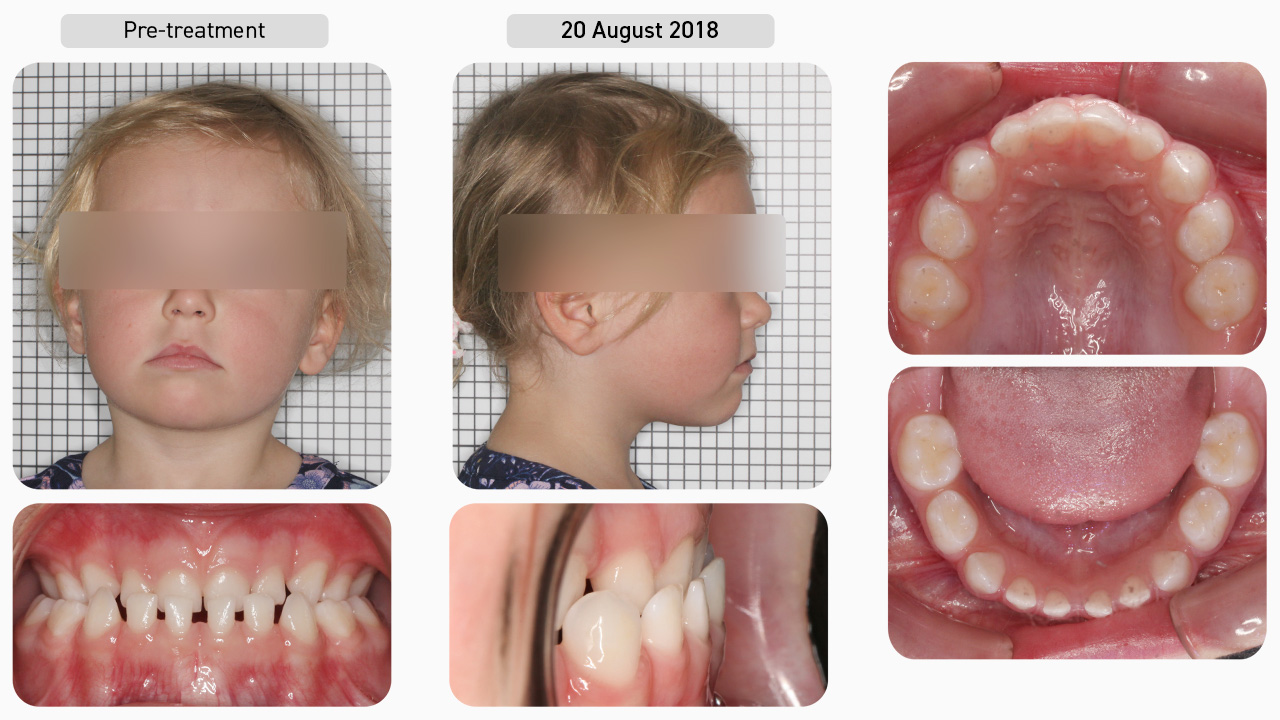
Pre-treatment
Using the Myofunctional Orthodontic Evaluation (MOE) form, we documented that this patient had a Class III malocclusion and bilateral posterior crossbite. The upper arch was severely underdeveloped in both the transverse and sagittal dimension, and there was a lack of spacing between the upper deciduous teeth. Her parents reported snoring and bruxism, and her poor myofunctional habits included mouth breathing with low tongue posture and a reverse swallow. Since the patient was in the primary dentition, her treatment began with the Myobrace® for Juniors series.
Dental Progression
The patient was issued the J1 appliance in order to establish nasal breathing and begin the correction of myofunctional habits. Once her breathing function had improved, and she was consistently retaining the J1 overnight, she progressed onto the J2 appliance to focus on arch development and continued habit correction. Given that she had both an anterior and bilateral posterior crossbite, the decision was made to use Myolay™ to ‘unlock’ the upper jaw from the lower jaw, so as to enhance upper jaw development. Notice the change in the upper arch form after only six months of treatment.
Dental Progression
As the upper and lower jaws were developing, the patient was issued the i-3® (small) appliance from the Interceptive Class III series. If required, the cusp tips of the deciduous canines should be equilibrated to relieve any occlusal interferences.
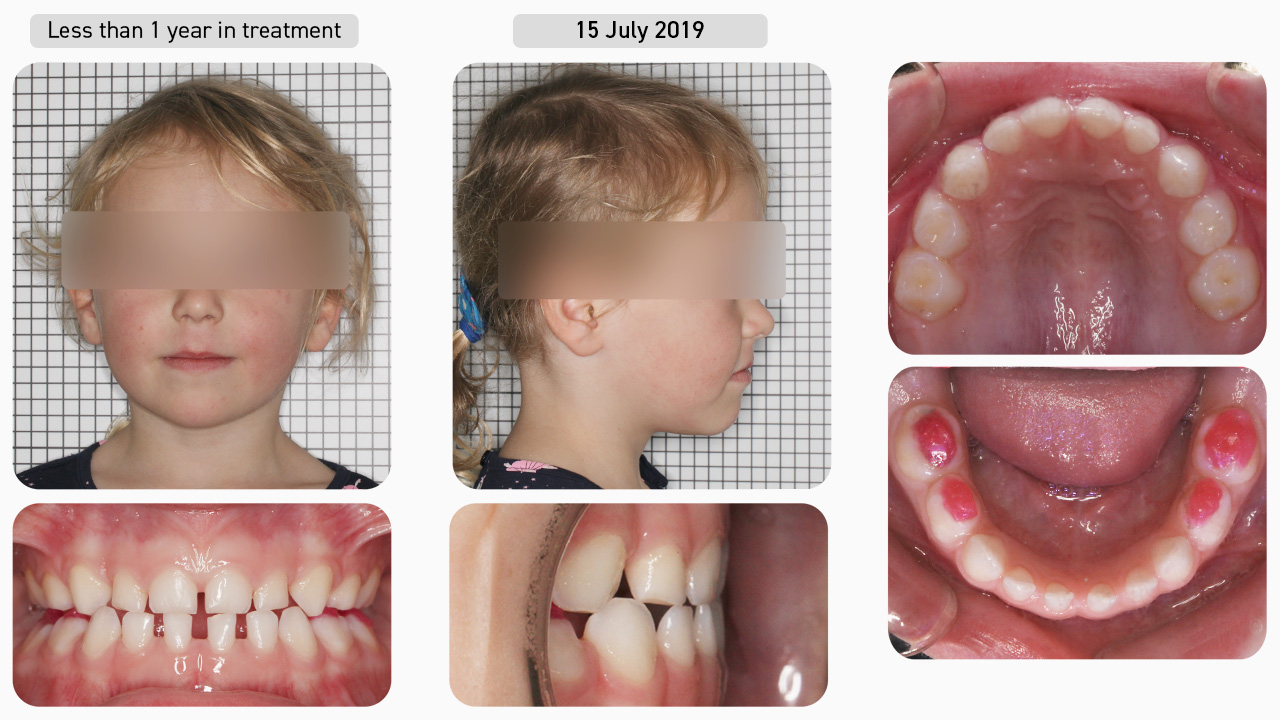
Case slide 6
This patient ended up needing more than six months of treatment to achieve the desired results due to compliance. In less than one year, the goals of phase one Myobrace® treatment were achieved. These were to establish nasal breathing, correct the poor myofunctional habits and promote good craniofacial growth and development. The patient then entered into the retention phase of treatment, which involved the use of the i-3H appliance to retain the arch forms, alignment and correct habits, in order for her to continue to develop correctly.
Facial Progression
Now that the breathing and myofunctional disorders have been corrected, not only have the teeth and jaws aligned, but the airway and posture have improved, and the patient is no longer snoring or bruxing (teeth grinding). With good breathing and muscle function established, we expect the patient’s remaining development to continue in a favourable manner.
Treatment Summary
Using the Myobrace® appliances combined with Myolay™ and the simplified Myobrace® Activities program, we have helped this patient to establish nasal breathing, correct her myofunctional habits and, therefore, achieve natural alignment of the teeth in less than 12 months of treatment. Both the anterior and bilateral posterior crossbites are corrected, and there is more spacing between the upper deciduous teeth. Most importantly, the patient is nasal breathing and no longer snoring or bruxing during sleep. With the correct breathing and muscle habits established, we expect the patient to continue to improve in her dental and jaw development as she continues to grow.

Case Study 2
This seven-year-old male patient presented with the chief complaint of crowded teeth, incorrect jaw development and nocturnal bruxism. His parents wanted to avoid extractions and braces after both having undergone this treatment themselves as teenagers, with poor long-term outcomes. After being presented with the various treatment options, the decision was made to undertake Myobrace® treatment, involving the use of a series of Myobrace® appliances in conjunction with the BWS arch expansion appliance, and the Myobrace® Activities.
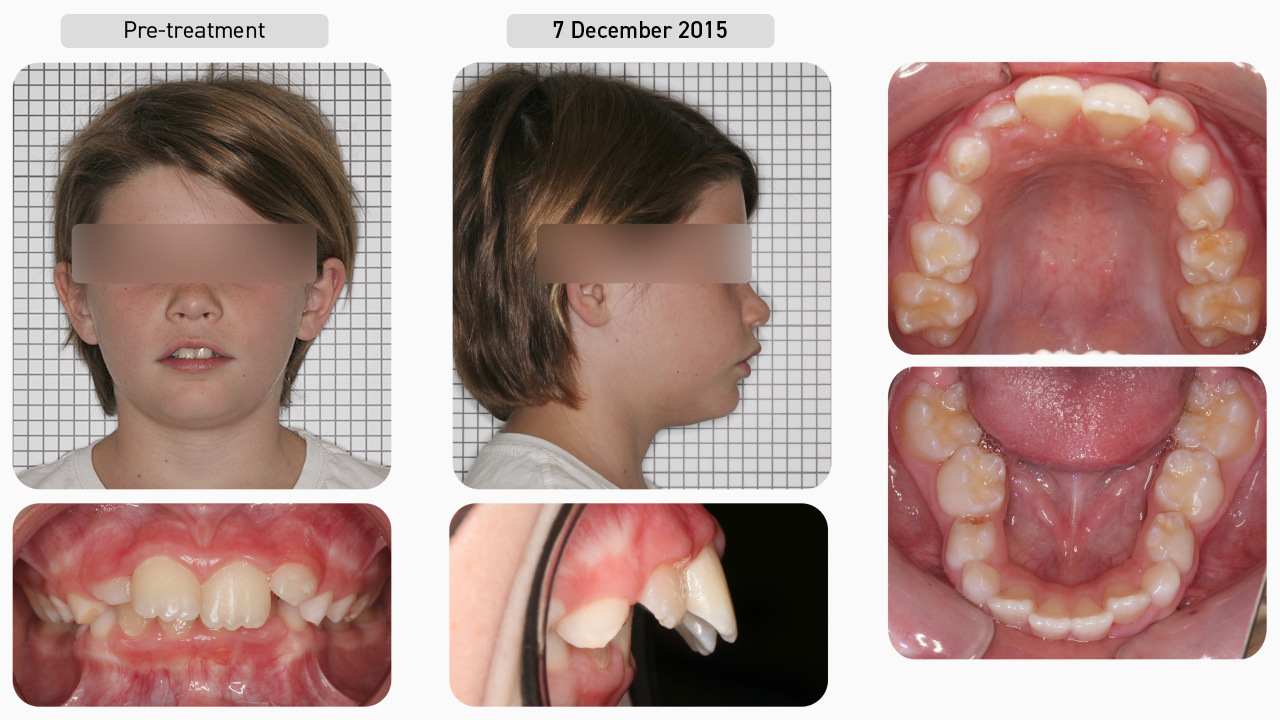
Pre-treatment
Using the Myofunctional Orthodontic Evaluation (MOE) form, we documented that this patient had underdeveloped jaws with moderate dental crowding. There is a narrow upper arch, severely hourglass-shaped lower arch, deep bite and increased overjet. This patient was a mouth breather with a lip trap, low tongue posture and reverse swallow. Since he was in the mixed dentition, his treatment began with the Myobrace® for Kids series.
Dental Progression
He started with the K1 appliance to establish nasal breathing and begin the correction of myofunctional habits. Less than two months later, his breathing function had improved and he was consistently retaining his K1 overnight, so he progressed onto the K2 appliance to focus on arch development and continued habit correction. To enhance development of the upper arch, the decision was made to use the BWS arch expansion appliance, and the patient was issued the T1BWS appliance, which is the preferred appliance to use with the BWS. This was combined with Myolay™ to ‘unlock’ the upper teeth from the lower teeth and allow the narrow arches to develop to their fullest potential.
Dental Progression
This patient needed multiple rounds of BWS expansion, so the wire was removed for a few months to let the teeth settle. With the wire removed, the patient was issued the T2 appliance now that he was in the developing permanent dentition, before refitting the wire for a second round of expansion. Because the BWS must be combined with first stage appliance, the patient was reissued the T1BWS appliance. Once the second round of expansion was complete, the wire was once again removed, and the patient was issued the T4A® appliance.
Dental Progression
At this stage, the arch forms were broad and round and the crowding had resolved, however, occlusion was not ideal due to residual muscle dysfunction. The patient was issued the P-3® appliance while he continued working through the Myobrace® Activities to correct his poor myofunctional habits. Six months later, his muscle dysfunction was corrected, and a good occlusal relationship of the teeth was established, so he was issued the T4 appliance for retention. The patient returned for a retention check appointment more than a year later and the result had been maintained. At this point, we would normally start to wean the patient off the Myobrace®, however, this patient reported that he preferred to continue wearing an appliance as he had gotten used to it and found that he slept better when he wore his Myobrace®. So, the patient was issued the T4A® appliance, ideal for long-term wear.
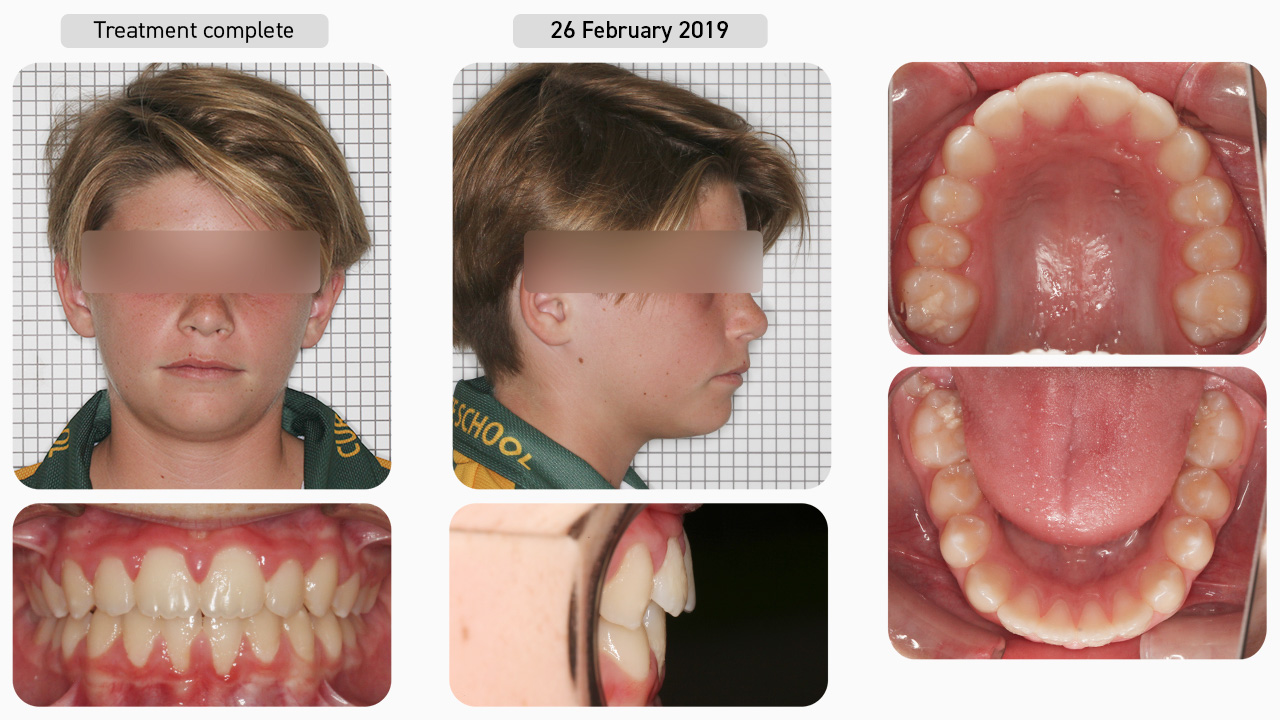
Treatment Complete
Once the goals of Myobrace® treatment had been achieved (establish nasal breathing, correct the poor myofunctional habits and attain good arch forms), the patient was entered into the retention phase. This involved the use of the T4 appliance to retain the arch forms, alignment and corrected habits, allowing him to continue to develop correctly.
Facial Progression
Since the breathing and myofunctional disorders have been corrected, improvements can be seen in the development of the face. The lip trap has been corrected and the patient is now exclusively nasal breathing. As a result, the midface and lower face have developed forwards and the airway has also improved. The buccinators have reduced in size and the lips are resting together more comfortably as a result of correcting function.
Treatment Summary
Using the Myobrace® appliances in conjunction with BWS arch expansion and the Myobrace® Activities, we have helped this patient to establish nasal breathing, correct his poor myofunctional habits and, therefore, achieve natural alignment of the teeth. The arch forms have improved significantly and the deep bite and increased overjet have resolved. Most importantly, the patient is no longer bruxing during sleep. With the correct breathing and muscle habits established, we expect good stability of the result ahead.

Retention
The patient returned for a retention check appointment approximately one and a half years after treatment was complete and the result has been maintained. The permanent dentition has erupted into well-developed arches and the jaws have developed in the right direction, resulting in a much-improved facial profile. With the breathing and myofunctional habits corrected, the patient is also now breathing and sleeping better.
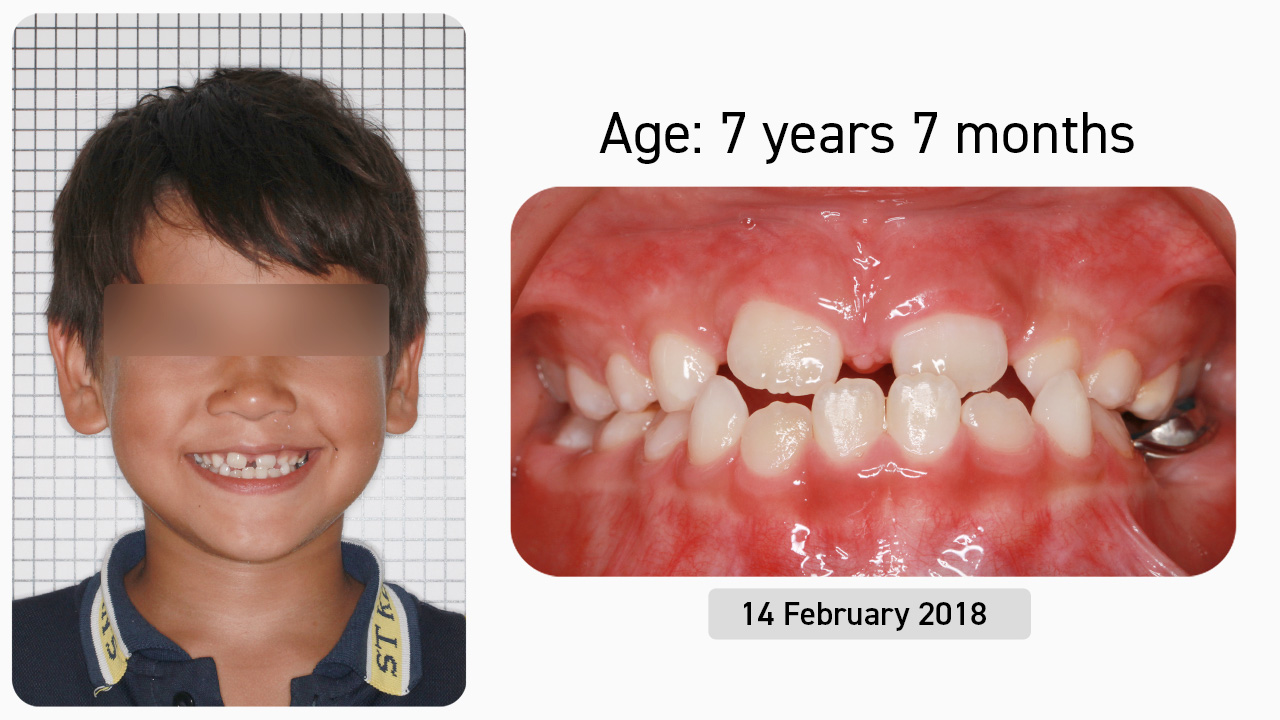
Case Study 3
This seven-year-old male patient presented with the chief complaint of an underbite and wanting to avoid braces. After being presented with the various treatment options, the decision was made to undertake Myobrace® treatment. This involved the use of a series of Myobrace® appliances combined with Myolay™, the Biobloc Stage 1 (BB1) appliance and the Myobrace® Activities.
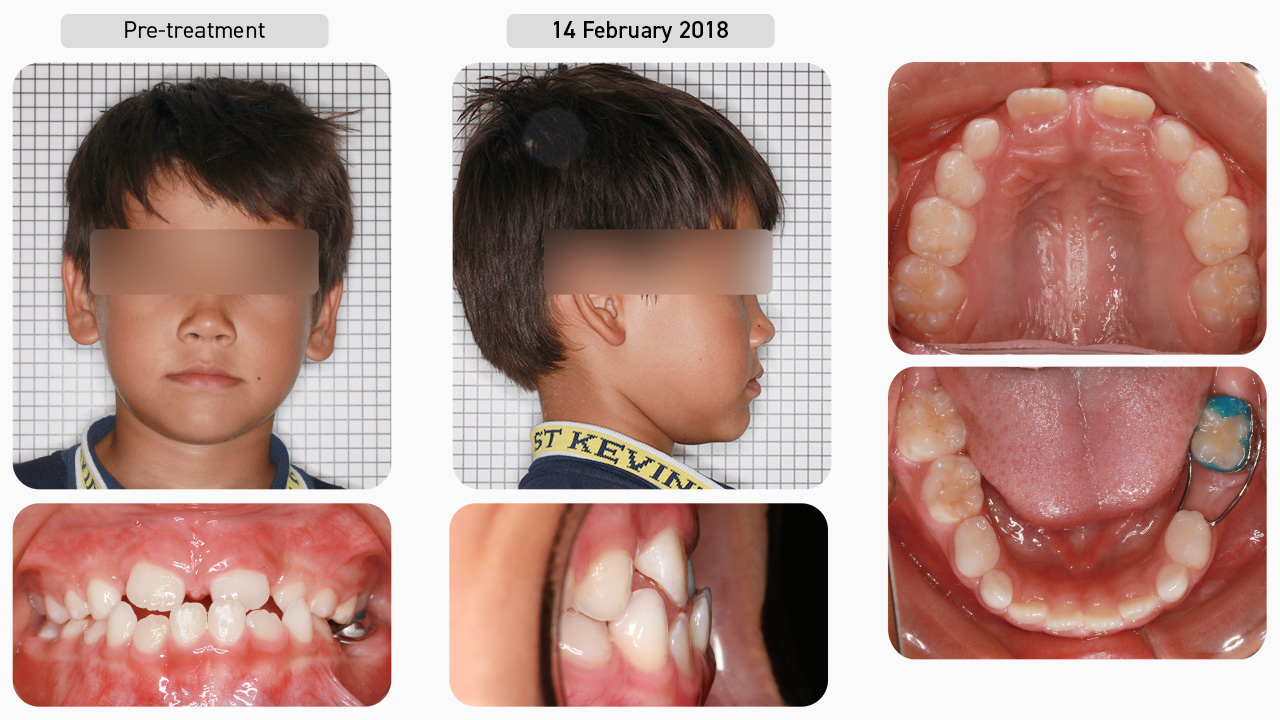
Pre-treatment
Performing a Myofunctional Orthodontic Evaluation (MOE), we documented that this patient had a Class III malocclusion with narrow and flattened arches and moderate to severe dental crowding. His poor myofunctional habits included mouth breathing with a low tongue posture and reverse swallow. Since he was in the mixed dentition with a Class III malocclusion, his treatment began with the Interceptive Class III series.
Dental Progression
He started with the i-3N appliance to establish nasal breathing and begin the correction of myofunctional habits. Six weeks later, his breathing function had improved and he was consistently retaining the i-3N overnight, so he progressed on to the i-3® appliance to focus on arch development and continued habit correction. Myolay™ composite was used to unlock the upper jaw from the lower jaw to further enhance maxillary development. Good compliance with both Myobrace® wear and the Myobrace® Activities saw the upper arch slowly develop forward and, at this point, the anterior teeth were in an edge-to-edge relationship.
Dental Progression
Since the upper arch needed further development to accommodate the tongue and create space for eruption of the lateral incisors, the decision was made to use the Biobloc Stage 1 (BB1) appliance to further expand the upper arch. The BB1 was used to produce both transversal and sagittal expansion, and the central incisors were approximated to close the midline diastema and open up space for the lateral incisors. During BB1 expansion, the patient continued to wear the i-3® appliance for one hour daily. Once upper arch expansion was complete, the BB1 was removed and the patient was issued the P-3® appliance for final alignment and retention.
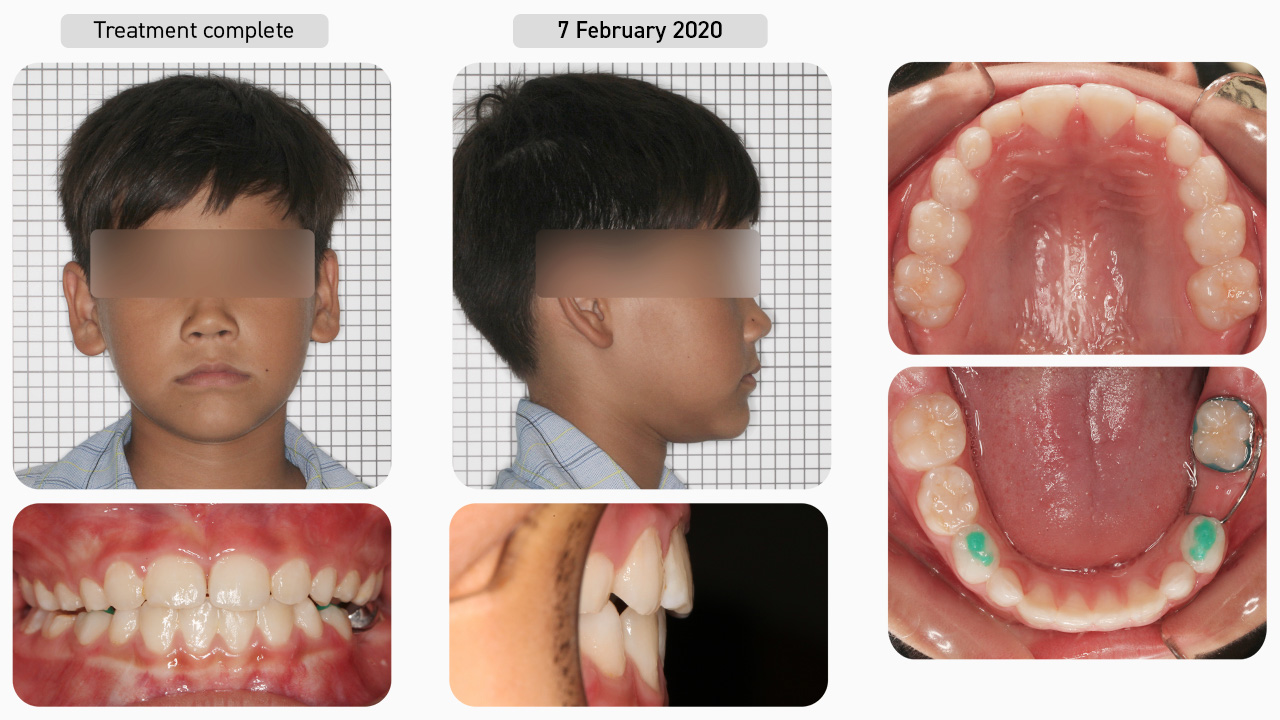
Treatment Complete
With good compliance, the goals of Myobrace® treatment (correction of breathing and myofunctional habits, arch form and dental alignment) were achieved. Following this, the patient entered into the retention phase, continuing on the P-3® appliance to retain the arch forms, alignment and habits, ensuring that he would continue to develop in the correct manner.
Facial Progression
Once breathing and myofunctional disorders have been corrected, the development of the face improves. This patient's midface has developed forwards, improving the oropharyngeal airway. Lip posture has also improved and, with good breathing and muscle function established, we expect the patient’s remaining development to continue in a favourable manner.
Treatment Summary
Using the Myobrace® appliances in conjunction with Myolay™ and the BB1, we have helped this patient to establish nasal breathing, correct his myofunctional habits and, therefore, achieve natural alignment of the teeth. The Class III malocclusion has been corrected, arches are broad and round, and the dental crowding has been resolved. With the correct breathing and muscle habits established, we can expect further improvements in the teeth and jaws as more permanent teeth erupt and the patient continues to grow.
Resources
Myobrace® Appliance Catalogue
Downloadable pdf document detailing the Myobrace® appliance range.
Download Resource